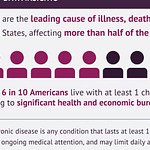“The Transportation Department is embarking on a national strategy to tackle rising traffic fatalities using new funding in the $1 trillion infrastructure law, addressing issues ranging from speed limits and street lighting to emergency medical care.”
The New York Times, January 2022
It’s not just automobile accidents that have risen, particularly in the last few years, it’s fatalities that have soared, too. The Department of Transportation has recognized this trend and has implemented a plan to begin addressing the various underlying causes…whatever those might be. It seems that it’s pure speculation at this point— data from the National Highway Traffic Safety Administration (NHTSA) show an across the board increase of auto accidents and fatalities, but not what is causing the unfortunate upward trend.
There’s a good hunk of money allocated to overall transportation safety and the funding comes from the (partially) bi-partisan infrastructure bill signed last year. You can review exactly how much money is earmarked for which projects in this U.S.DOT Fact Sheet. Fortunately, it looks like the DOT is taking a holistic approach to transportation safety, from funding for new bridges, to designing ways for states to track drivers with poor safety records and rolling out public safety advertising campaigns.
Some would characterize these programs as wasteful, big government spending, but I believe it’s a sound investment in out country’s future, and so do the majority of Americans..
It’s startling enough that auto accidents and fatalities have risen fairly dramatically in the last several years and we don’t know why, but the statistics also demonstrate that our poor and minorities have born the greatest losses. Is it because the poorest and people of color always pay the highest price when the economy tanks, a pandemic sweeps the world and/or inflation cripples our buying power?


David Leonhardt, a writer for The New York Times who often contemplates the issues surrounding poverty in our country, has written several times about the strange increase in traffic accidents and automobile fatalities, including an increase in pedestrian deaths, during the pandemic through today. His most recent article, published just a few days ago, takes on the disparity of traffic deaths among race and class. According to his research, one of the likely causes of the general uptick in auto fatalities , which started a few years pre-pandemic, is distracted driving—likely talking and/or texting on our favorite device: the cell phone. Then came the Covid shutdown and apparently many people saw less traffic on the roads as a license to speed. But the upward trend in fatalities continues, even after near normal traffic patterns have resumed and there’s plenty of cars on the road. The theories now include pent-up pandemic anger, increased drug and alcohol use, and even depression that cause drivers to take risks like not wearing seatbelts, disregarding traffic signs or driving while impaired or fatigued.
But what about the disparate impact of the rise in traffic injuries and fatalities on low income folks and people of color?
Lower-income people are much more likely to die in crashes, academic research shows. The racial gaps are also huge — even bigger on a percentage basis than the racial gaps on cancer, according to the C.D.C. David Leonhardt, 8/22/22 NewYork Times.
There’s not a good answer for these statistics either, other than to note that the poor typically drive less reliable and safe cars, have less money for needed car repairs and maybe do more driving, especially for work. And let me add some anecdotal evidence from my own experience: when you do not have enough money, you are constantly worrying about, well, not having enough money. Add the stressors of everyday life and maybe a few unexpected slap downs and you have the recipe for distracted driving, no cell phone use needed. Stress caused by poverty and hardship can cause accidents and injuries of all kinds, as I wrote in a previous post, and of course, getting behind the wheel of a car adds exponentially to the risks—not just for you, but for everyone else on the road with you.
I’ love to hear your thoughts on this cheery topic the weekend before Labor Day. What do you think are the causes of the spike in car crashes and fatalities these last few years? And am I, the U.S.DOT and other writers going in the right direction about why the poor and minorities are once again bearing the brunt?
All comments are welcome!
And as always…
I ask you to join me on our journey to understand the “why” behind the facts, so together we can help find solutions to our most pressing economic, racial and environmental issues and push to right the wrongs of our system. Each of us can thrive in this country, if we don’t allow ourselves to be beaten down by the very system we’re trying to make good in. One of the best ways to do this is to become an active member of your community and a participating citizen in our larger community.
And speaking of communities, you can also become a participating member of the Crime and Punishment community by signing up right now for a free or paid subscription. Thanks in advance for your support!












